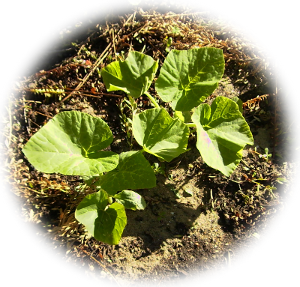
We have some pumpkin plants growing in our yard. I counted them at one point, and there were 24 plants. This inspired a little puzzle –
If I have 24 pumpkin plants, and half of them grow a pumpkin, and half of those that grow a pumpkin grow another, and half of those that grow another grow yet another still – then how many pumpkins do I get in the end?
You can vary this puzzle – for example,
- if I have 25 plants, and three fifths grow a pumpkin, and three fifths of those grow another, how many pumpkins do I get?
- If I have 27 plants, and a third grow pumpkins, and a third of those grow another, and a third of those grow yet another, how many pumpkins do I get?
- If I have 27 plants, and two thirds grow a pumpkin, etc, how many pumpkins do I get?
Surely you’ll end up with an infinite number of pumpkins…
Or do you assume that you can’t have fractions of pumpkins?
If so then what do you do when half of those that grow pumpkins is now a fraction? Do you round up or down?
So many burning questions with no answers!!!!!
Ross
http://www.LetsTalkTanks.com
Allowing fractions of pumpkins makes the puzzle even more challenging and interesting… but you still don’t get infinitely many pumpkins.
Strange but true!
Hmmmm… I guess you don’t if you assume that fraction of a pumpkin will only produce a fraction of a pumpkin. But if a fraction of a pumpkin produces a full pumpkin then surely you end up with an infinite number of pumpkins…